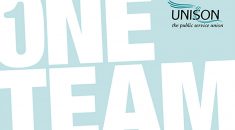The announcement today (Thursday) that the National Institute for Health and Care Excellence (NICE) is to suspend its work developing guidance on safe staffing levels throughout the NHS has been greeted with deep concern by UNISON.
UNISON Head of Nursing Gail Adams said: “Every year the NHS spends a huge amount of money on agency workers because it simply does not have enough nurses to keep going.
“It’s surely no coincidence that since NICE came up with recommendations concerning the numbers of nursing staff needed in acute clinical settings, there are now more nurses – both agency and NHS – working in A&E departments.
“With NICE’s work well underway on the safe staffing levels needed in maternity, mental health and community services – areas of the NHS that are chronically understaffed – there was clearly a fear that the forthcoming guidance would mean the need for yet more agency nurses.
“Increasing the numbers of nurses on wards might cost more money, but it also
means improved patient care and safety. Today’s decision will do little, if anything, to engage and build public confidence.
“To move towards an NHS that is safely staffed to meet the growing demands being placed on it, we need to take a serious look at workforce planning and design.”
Notes to editors:
UNISON is calling for:
· NICE to continue with its original safe staffing mandate set out by the Department of Health, for there to be an introductory period allowing trusts to plan for meeting safe staffing levels, and a date by which they must be compliant
· The establishment of a national collaborative group to include employers, unions, NHS England and Health Education England to develop plans to increase workforce capacity
· The Migration Advisory Authority to review the occupational shortage list, and include band 5 nurses until 2017-19 when more student nurses will have graduated
· The development of a clear post-registration career framework for nurses and midwives to help with staff retention.


